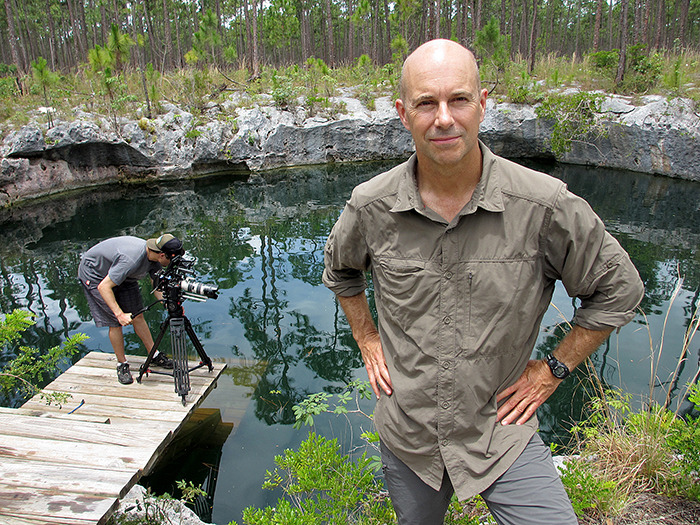As History Television prepares to air Super Stadium, the first episode of Blowdown Season II, Tuesday night at 7 p.m, here in house we’ve been talking about the groundbreaking triumphs – and inevitable agonies – behind the incredible shots that make these shows so undeniably explosive.
A high-stakes mission
After shooting, editing, and delivering eight episodes of the series, which follows Controlled Demolition Inc. as they tackle the world’s toughest implosions, I can say with certainty that there’s nothing like the rush we get when the crew returns to the production office after an implosion.
They may be on the road for weeks filming the prep work leading up to the demo, but everything rides on the footage they get on the last day, and there is little room for error and no do-over. It is the ultimate life lesson.
We call it demo porn and we pour over the shots as they come in.
The money shots
When we filmed Blowdown II: Spyship – the sinking of the Hoyt. S. Vandenberg off the coast of Key West, Florida – we mounted recoverable cameras and harddrives that filmed her as she sank. Listen to the sound as one goes down: it is utterly eerie.
Blowdown – Unsinkable: camera rides the Hoyt S. Vandenberg down from Parallax Film on Vimeo.
In our mission to capture a potentially record-breaking drop for Blowdown II: Monster Tower, we mounted cameras on the top floors of the doomed Ocean Tower condominium project on South Padre Island. And amazingly, they actually rode the building down during the implosion.
We weren’t able to recover the cameras but here is the system we designed that protected our harddrives.
With the help of Controlled Demolition Inc. President Mark Loizeaux’s expert advice, it landed right on top of the rubble pile as predicted. And a 30-something storey drop later, the footage was all there. And it’s incredible.

Our ultimate challenge was Blowdown II: World Cup Demolition. We filmed the whole episode in 3D.
Sometimes, after all this amazing footage hits Parallax Film HQ, we don’t even know what we’re looking right away at and only piece it together as we unravel the story … the wonder of these discoveries is really satisfying.
Getting the goods
One of the big questions for crew is whether to shoot big wide shots that allow you to watch the whole thing unfold, complete with the amazing microsecond timing. Or do you zoom in and witness the devil in the detail like the failure of expansion joints or payoff of pre-slicing concrete rings?
Sometimes it depends on the camera technology. We’ve experimented with high speed cameras at 300+ frames per second, and found that it worked best for those tight shots, rather than the wides which you just want to let run.
Time to explode
We’ve done some amazing stuff with cameras in this series – things that, to our knowledge, have never been done before.
And the very best of these unparalleled visual experiences will be rolled out over the next few weeks on History Television.
Enjoy the ride, Canada.
We sure did.
–Maija Leivo, Executive Producer


